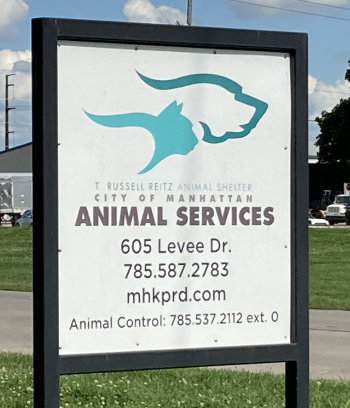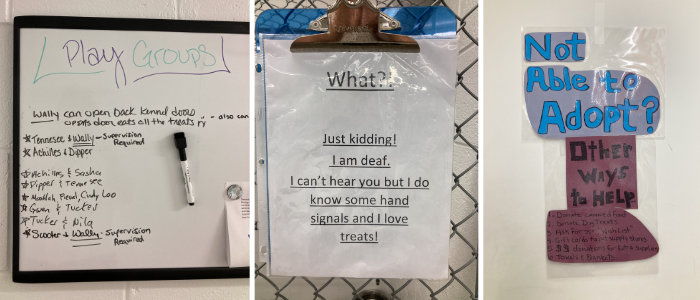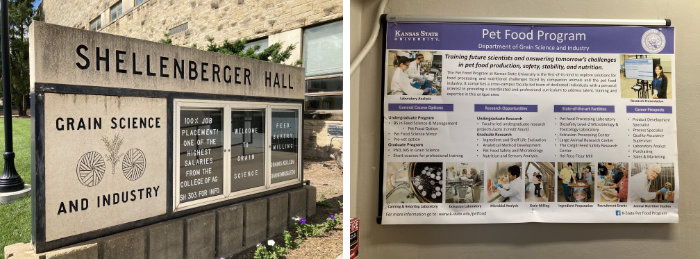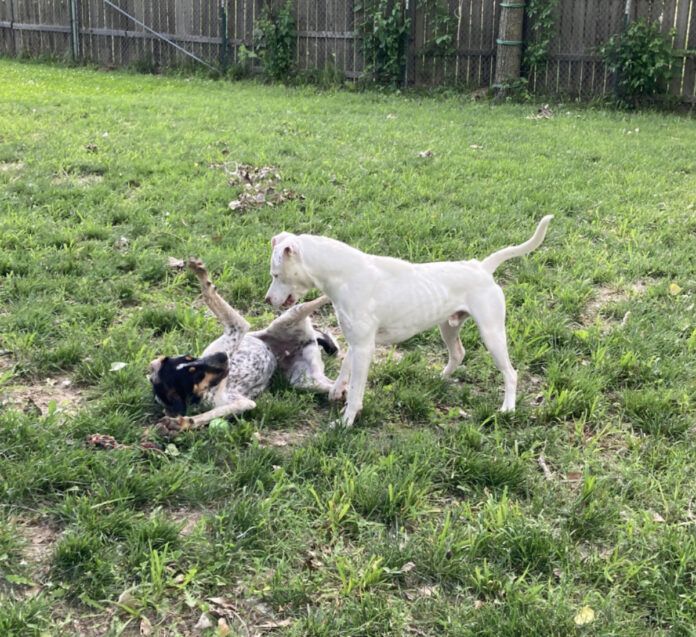A couple of months ago, I had the opportunity to visit a former coworker/friend I hadn’t seen for a decade or more. He had invited me to a party he throws annually – one that I had declined with regret every year, because he lives in Kansas and I live in California. But what with the sudden loss of a beloved family member, vaccination against COVID, and the opening up of restrictions on gatherings, I decided that life is too short to turn down invitations like that. I flew to Kansas, went to the party and stayed for a couple nights with my friend and another of our coworkers from 25 years ago. It was wonderful to catch up with both friends and to compare notes about our lives, a quarter-century down the road.

When I booked the trip, I gave myself a couple of unscheduled days to decompress and do whatever I felt like. After I said goodbye to my friends, I spent a day driving through the tallgrass prairie range in east-central Kansas. The endless green grass, the matchless blue sky, the billowing white clouds … it was so healing (especially since, back at home, our sky was smoky from wildfires and the drought has everything looking very brown).
Eventually (like, after half a day, lol) I started feeling too self-indulgent; I should do some work while I was out there. I ended up touring through a town where there are several dog-food manufacturing plants (Emporia), and visiting the animal shelter there. As a long-time shelter volunteer, I love visiting other shelters; folks who do the same things in different places do them in different ways and I always see something interesting to try back at home.
I also called a friend, Dr. Greg Aldrich, a professor at Kansas State University and founder of that school’s Pet Food Program, to ask him what other dog-food-related tourism I ought to take in. He tried to pull a few strings to see if he could get me into any production facilities where he had connections, but the COVID restrictions were still limiting visits at each place he tried. However, in a generous act, he invited me to K-State and said he’d give me a tour of the Pet Food Program’s facilities.

I headed to Manhattan, Kansas, and had just enough time to spend an hour visiting that town’s animal shelter before it closed. What I loved most at that shelter: The friendly, humorous, and encouraging signage in the shelter, which showed their commitment to giving each ward some individual attention, and invited visitors to engage with the shelter in any way possible; and the HUGE wooded play yard that was directly outside the dog kennel’s back doors. Staff and volunteers can (and did, while I was there) just open a dog’s run, open the back door to that room, and allow the eager dog to ZOOM out the door and run and romp up and down a hill and among trees and grass to their heart’s content. What fun! No struggling to get a leash on a crazily over-eager dog so you can be dragged through corridors to get outside – just opening the kennel gate and then the door, and “Here you go!” I loved that setup.

After playing with some dogs, I found a hotel and settled in for the night. The next day, I met Dr. Aldrich (and his enormous silver Lab, Lucre, who gets to go to work with his dad) at K-State. He took me on a tour of the Pet Food Program’s school facilities, where undergraduate, Masters, and PhD students conduct hands-on research into pet food formulation and production. What an amazing program! Students who are interested in a career in pet food production can conduct research into formulation and manufacturing; the university has facilities for everything from grain-milling, meat-processing, freeze-drying, baking, canning, and extruding. Multiple laboratories exist for biological and chemistry tests. The students actually manufacture pet food under various conditions and with various ingredients and evaluate the nutrition in the resulting products.
Good For K-State, a K-State alumni magazine, describes the program this way:
“This program draws talent from many areas within the College of Agriculture such as grain science, agricultural economics, animal science and food science. Engineering and veterinary medicine faculty and students also collaborate with the pet food program, along with foods, nutrition, dietetics and health in the College of Health and Human Sciences.”
Dr. Aldrich ordered a stack of pizzas and hosted an impromptu lunch for me and the graduate students who were around campus on this summer day. He invited them to introduce themselves to me and describe their goal in the pet food industry. I was so impressed with their interest and passion for pets and pet food, and fascinated with the projects they were working on for their various Masters and PhD projects.
While I met only graduate students, the K-State program also has offerings for undergrads, including a pet food minor and an option within feed science and management.

Dr. Aldrich says the one thing the program could use is more students. “Kansas has declining enrollment numbers for students of college age, yet the industry is asking us for more and more young people to come work for their companies,” he told me.
According to Good For K-State, the U.S. is the largest market in the world for pet food, a $33 billion business annually.
Dr. Aldrich had another meeting and the students had to get back to their projects. I thanked them all and hit the road again. I had a few more hours to kill before I headed back to Kansas City to catch my flight home. I thought, I’ll go visit some pet supply stores! This is another habit I like to indulge when I travel. I love seeing the different products that are stocked by stores in different areas of the country; the food, toys, and even training gear are quite different!
Here was something else that was quite different: What I call “pet supply stores” in California are truly “pet stores” in Kansas; at least, the two I visited were. They actually sell puppies. Like, lots of puppies. One store had over 70 puppies; the other had nearly 50.
The only way that there could be this many puppies in the same age range and of so many different sizes and breeds (and breed-mixes; they were not all purebreds) in stores in this many numbers: puppy mills, which are apparently thriving in some parts of the country.

I don’t know the answer. How can we produce enough dogs to satisfy demand without having to breed and sell them in this way? I can’t imagine how harmful it is to their development to have to live for any length of time in those tiny wire-bottomed enclosures, drinking from those horrible ball-bearing rabbit-waterers. And what happens to the pups who “age out” in the stores? Do they return to the puppy mills to be forced into a life of endless reproducing themselves? Ugh! I hated everything about these stores, and wish that no one bought pups this way.







Good for you! An eye opener for every pet lover is to take a little time and see what’s going on in the world around us. Some states have made strong efforts to STOP puppy mills. We need to make every effort to stop them everywhere. Horrendous treatment of dogs.
I’m from Kansas and am ashamed that those stores exist! I wonder were those in rural communities? There is no excuse. Thank you for sharing- I graduated from K-State and it’s a wonderful school.
I am a lawyer in Kansas and Kansas has had a serious puppy-mill problem for a long time. The cities and towns in Kansas often have ordinances that are drastically pet “unfriendly,” and Wichita is one of those unfriendly cities. Its shelter is one of many that automatically kills and will not adopt out a dog that might be a “pit bull.” Those are “the worst of times.”
I am also a pet owner and have had four canines treated at K-State. My vet, Christen Skaer, was a student at K-State when I first took a dog there. It is now more than two decades later and I am grateful every day that I found her. I would not take my animals to anyone else. She was instrumental in starting a special program to help care for animals after natural disasters like the Greensburg tornado. Dr. Ken Harkins at K-State is head of the veterinary internal medicine department and he is an amazing resource for our vet school and the practicing vets in Kansas. These folks are “the best of times.” I am glad you got to see some of the best of Kansas.
I know Kansas is terrible for puppy mills, but don’t think you’re alone in sharing this “honor”. They are all over this country. We run into more of our fair share here in the southern U.S. (Tennessee, Kentucky, Virginia, North and South Carolina, Georgia, and northern Florida, Alabama, Mississippi, and Louisiana) have some horrible puppy mills/backyard breeders. I’ve gone with police officers/animal control officers to “shut down” some of the most egregious places. The sights, sounds, and smells, will haunt me the rest of my life. The state of the dogs and their fearfulness brought tears to more than a few of our eyes. Don’t ever fool yourself or sugarcoat it. These “commercial breeding facilities” are hell on earth for the dogs in their care. Some dogs are lucky and make it out alive and some come out relatively unscarred. Others (like the Dane we took in–either we took her or she was going to be euthanized so of course we took her) are truly scarred for life.
Time for Kanas to see the light! Puppy mills and backyard breeders are the worst kind of criminals!
I loved hearing about the dog food nutrition program but the puppy mills, how awful. Thank you for highlighting this horrible act. It should be banned, I am so sad for those puppies and dogs that age out but I’d love to do an online dog food nutrition certificate.
We took in an “unadoptable” puppy mill survivor (extremely fearful Great Dane and I do mean extremely fearful and everyone was concerned (rightly) about potential aggression and in a breed as large as a Dane, well, not good news). This dog was truly scarred for life by the experience she had in the puppy mill. She was able to live her life out here with us in a relatively happy state of mind, but she was unable to leave her house/yard without being so afraid and shut down she was almost catatonic. She didn’t ever go anywhere (no neighborhood walks, no trips to fun places like pet supply stores, etc.) and if she had to go to the vet, medication was an absolute must. If we were having people to our home, medication (with ultra-strict environmental management) was a must. No dog should suffer what she did. We need to shut down those filthy hell-holes once and for all.
Oklahoma Legislature took action against puppy mills and I am so grateful. Although a few, very few, still attempt the dastardly work of milling puppies. Perhaps your story will be the catalyst to open the eyes of Kansas, and any other state that has the mill problem. Thank you for accounting of you trip.
People just should not be allowed to walk into a store and buy a puppy. Too often it’s an impulse buy with little thought to the responsibility, cost, & work involved. Even the relative ease in supply & lower cost of backyard breeders results in many abandon adolescent pups. Responsible breeders will always take back any of their puppies or dogs and would be horrified to discover them homeless.
I foster for a breed specific rescue which normally hardly ever has puppies much less healthy ones. In just the last 8 months, there has been 8 healthy purebred puppies from newborn to 6 mos surrendered to the rescue.
A neighbor whose little girl loves to come play with my dog was waiting 8 mos to get a pup from a breeder. I recommended they read “Before and After Getting A Puppy”-Ian Dunbar. They ended up reconsidering and decided they were not ready to get a puppy.
Having to wait a year or more for a puppy from a good breeder might not be a bad thing.
“Impulse buys” aren’t just from pet stores.
My Freyja was returned to the Hesperia Animal shelter twice. The second time within 24 hours of adoption and that red carded her. If I hadn’t adopted her she likely would have been euthanized to make room for more dogs, even though California is a no-kill state.
Freyja looks like a little wolf. She’s a Siberian Husky and Disney’s Togo likely elevated the desire for huskies like 101 Dalmations did for Dalmations, etc. I was told she was returned both times for destructive behavior. I’m sure people adopted her because she looked cute, not because they knew anything about her and what would be required. While I adopted her because of her looks, I thought she was a Keeshond and I knew they don’t do well left alone for more than a few hours and can be destructive. Apparently the same holds true for huskies. I knew what I was getting in to and I had the home environment to meet her needs; an 8 foot fence with dig-proof concrete around the foundations and two gates at each end, like a lock system. I have extra bowls and bedding because I’ve owned two dogs before. I’m retired so could stay home for days on end until she adjusted. Plus I had Diana, who would be a companion. Turned out great for everyone. She is quite the snuggler if a bit over affectionate. Diana is teaching her to play with toys and to enjoy the dog park. Diana now has a companion when I leave to go water walking at the pool. Mine was also an “impulse buy” but for different reasons, I.E. I wanted to rescue her from death row, and I knew what I was getting in to, the expense of a second dog, the restrictions on my life (I won’t be taking vacations for the next 12-15 years) but as an experienced dog owner I was aware up front and did all the math and decisions in my head before I bundled Diana in the car and drove three hours to meet Freyja. I have no regrets. She is totally clueless. It took 10 days before she finally figured out she wasn’t going to be returned to the shelter. Now cars and grooming are fun, not a preamble to being returned. Thankfully she isn’t “damaged”, at least not too much, and has put all that behind her and is living her best life.
Shelter dogs can be impulse adoptions because shelters don’t screen the adoptees like rescue organizations do. They just want the dogs out so there is room for another dog to come in. They dont’ match dogs with adoptees because they know very little about the dogs and don’t bother to see if it is a good fit. This can be worse for the dog because if they are returned, their stay becomes short term. Returned twice? You can guess. I believe Freyja was returned on June 26. I adopted her on June 29. They were closed on the 27th and 28th. So she got very, very lucky. I expect 3-7 days would have been her maximum time left. She’ll never know.
You were in Emporia? Anywhere near the Cross House? I’ve been following that blog about the restoration. Ross has been at it since 2014 and is now starting on the Carriage House too.
At least the stores are clean and the puppies have some space. I would assume also kept pest-free. (No one wants to buy a dog with fleas or worms.)
As to what happens to them? I would think they end up at the local shelters where, if they aren’t adopted within a set amount of time, they are “moved on” to make room for more intakes.
I read in horror stories of Amish puppy mills in Pennsylvania where they shove a stick down the throats of dogs to break their vocal chords to stop the barking. How horrible and more so the voting public of those states allow them to do that with no laws to stop it.
I need to go outside and put Diana pawPrints and Freyja Grey. Both rescue mutts.
It’s true about Pa. horrible conditions and in humane treatment seem to be allowed. Lots of farmland here. One famous breeder (Miller) moved from southern Pa. to Maryland when things got too heated for her as a puppy Miller . The name Stolzfus was constantly in the news, but it didn’t stop her. In Pa. she owned land divided by a country road. The breeding kennels were on one side of the street and the new puppies were kept in an immaculately clean barn across the street. So who would suspect when looking at a new litter with the intention of buying a puppy? There needs to be a reform nationwide on passing laws against puppy mills.